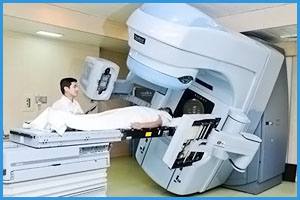| |
Of the 3 main styles of Bladder Cancers, the foremost common is shift Cell cancer. Less common Bladder Cancers embody epithelial cell Carcinomas and Adenocarcinomas. |
| |
A patient's treatment and survival rate depends on however deeply the cancer has invaded the bladder, and if it’s unfolded to encompassing or distant sites. |
| |
SYMPTOMS |
| |
The most common symptom of Bladder Cancer is blood within the urine. This symptom is typically painless, and isn't continually visible to the optic. Often, the diagnosing of Bladder Cancer is delayed as a result of hemorrhage is intermittent. Alternative symptoms embody associate degree inflated frequency of excretion, associate degree inflated urgency to urinate, feeling the necessity to urinate however not having the ability to, and painful excretion. |
| |
If you've got one or additional of those symptoms, it doesn't mean that you simply have Bladder Cancer. However, it's vital to visualize a doctor in order that any ill health will be diagnosed and treated as early as potential. |
| |
DIAGNOSIS |
|
 |
|
| |
Bladder Cancer is most frequently diagnosed by examining cells within the urine beneath a magnifier and by inspecting the bladder with a Cystoscope, a slender tube fitted with a lens and a lightweight that's inserted into the bladder through the channel. |
| |
If cancer is suspected, a tissue sample is removed throughout the cystoscopic procedure and examined beneath a magnifier. If cancer is confirmed, computed topography (CT) may be required to see the stage of the cancer, whether or not the cancer is confined to the bladder or it's unfold to alternative components of the body, like the liquid body substance nodes, lungs, bones, or liver. Analysis is beneath thanks to confirm if resonance Imaging (MRI) and Positron Emission Tomography (PET) will additional accurately diagnose and stage Bladder Cancer. |
| |
TREATMENT |
| |
Treatment for Bladder Cancer varies greatly looking on the stage of sickness at the time of diagnosing. |
| |
SUPERFICIAL BLADDER CANCER: |
| |
The majority of Bladder Cancers area unit shift Cell Carcinomas (TCC) that area unit confined to the liner of the bladder. The quality treatment for superficial Bladder Cancer is minimally invasive surgery employing a Cystoscope to get rid of the neoplasm. |
| |
INVASIVE BLADDER CANCER: |
| |
Surgery to get rid of the bladder is that the most typical treatment for Invasive Bladder Cancer, cancer that has unfold into or on the far side the muscle layer of the bladder wall, and provides the simplest chance for a long-run cure for many patients. |
| |
 |
For patients whose tumors need surgery to get rid of the whole bladder, it's conjointly necessary to get rid of the encircling liquid body substance nodes to assist forestall cancer repeat or metastasis. In women, this procedure conjointly involves the removal of the lower portion of the ureters, the uterus, fallopian tubes, the ovaries, and generally a part of the epithelial duct wall and therefore the channel. In men, the endocrine gland, the lower portion of the ureters, and generally the channel area unit removed. |
| |
After removing the bladder, surgeons should produce a replacement approach for the body to store and eliminate urine. The historical approach, called an Ileal Conduit, needed a patient to wear a bag on the surface of the body to gather urine. Throughout this procedure, a passage for the urine was created employing a phase of the little bowel. It transferred urine directly from the kidneys and ureters, and needed a stoma on the skin to funnel the urine into the gathering bag. |
|
|
| |
For individuals whose channel has been removed, an indoor bladder is made then connected on to the abdominal wall. A stoma is connected to the interior bladder, and therefore the patient inserts a tube into the stoma to eliminate the hold on urine. It takes regarding 3 to 5 minutes to empty the bladder this fashion. |
| |
Many patients with muscle-invasive Bladder Cancer area unit treated with therapy before or once surgery, exploitation M-VAC or alternative regimens that have fewer aspect effects, to assist forestall the repeat of cancer. |
| |